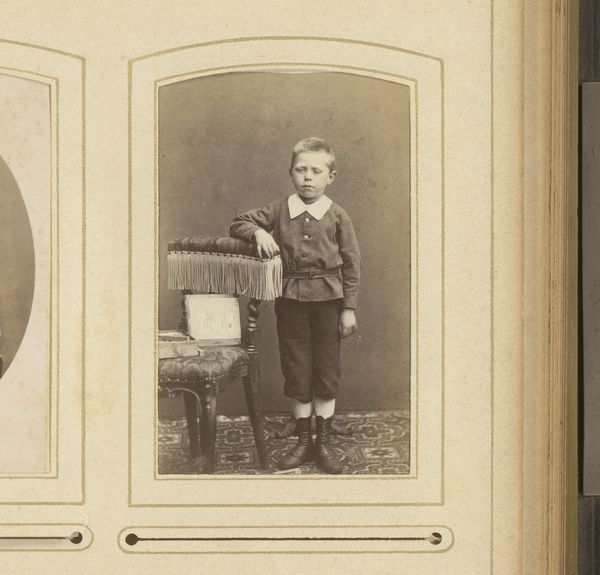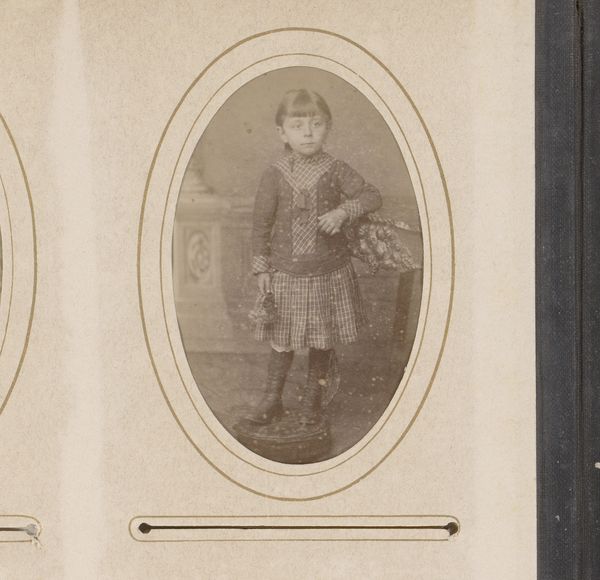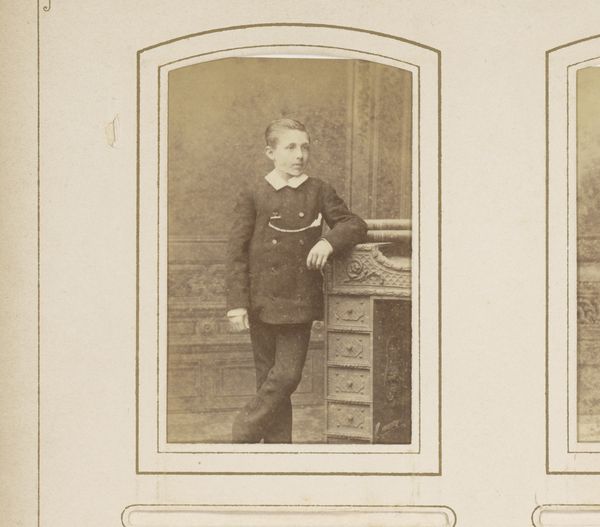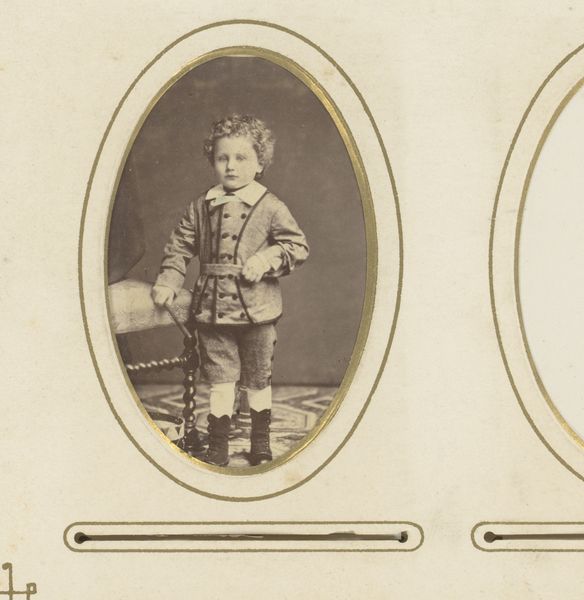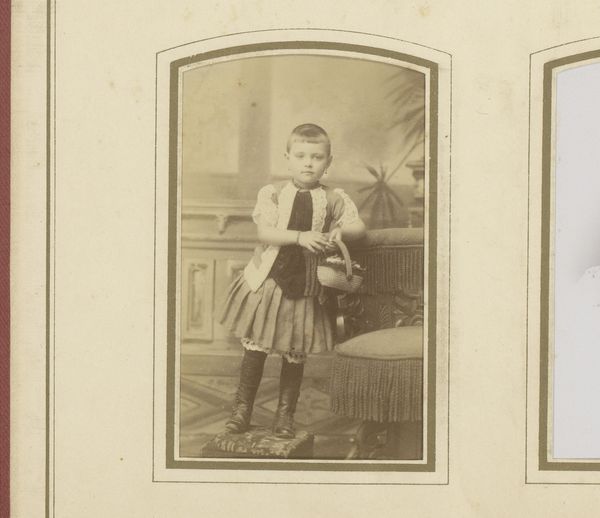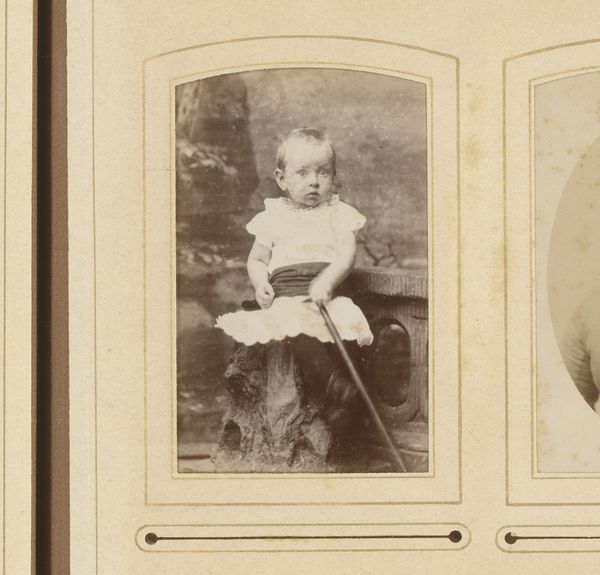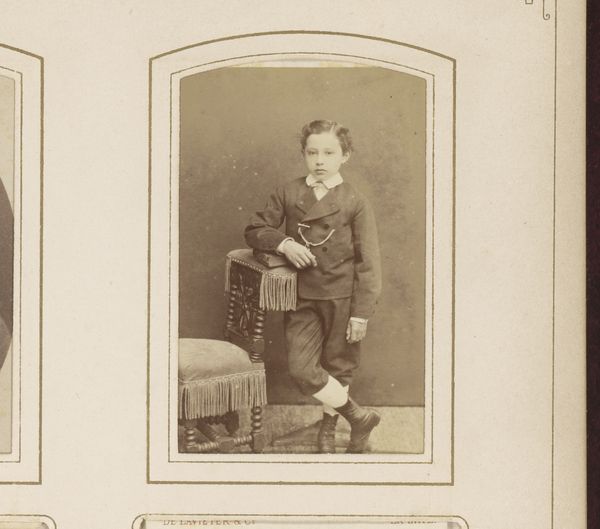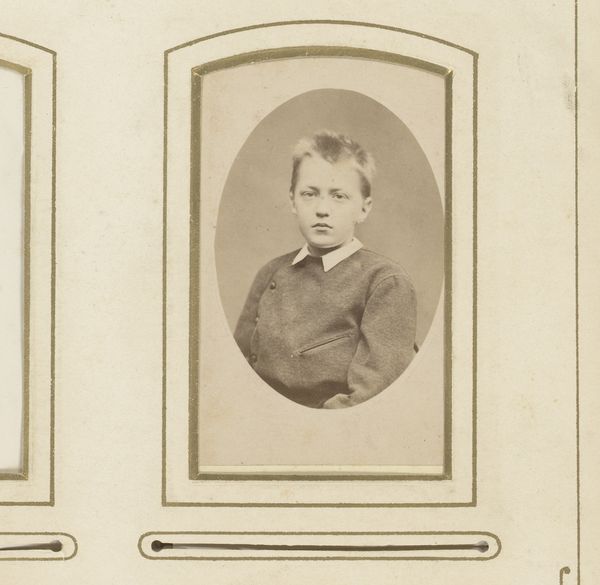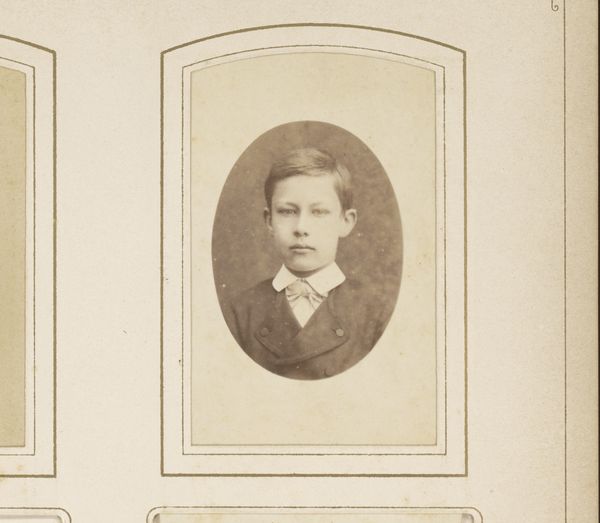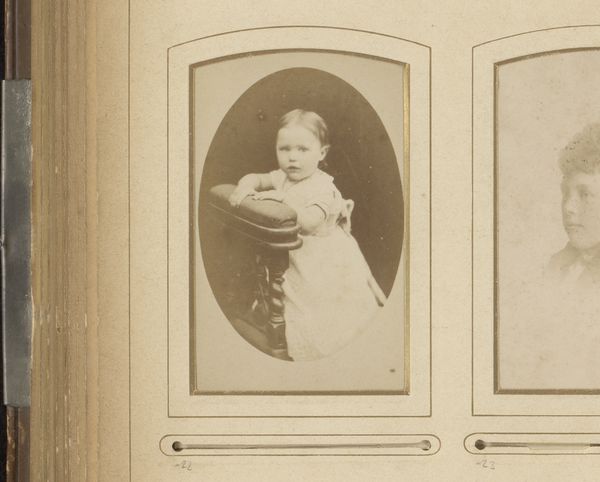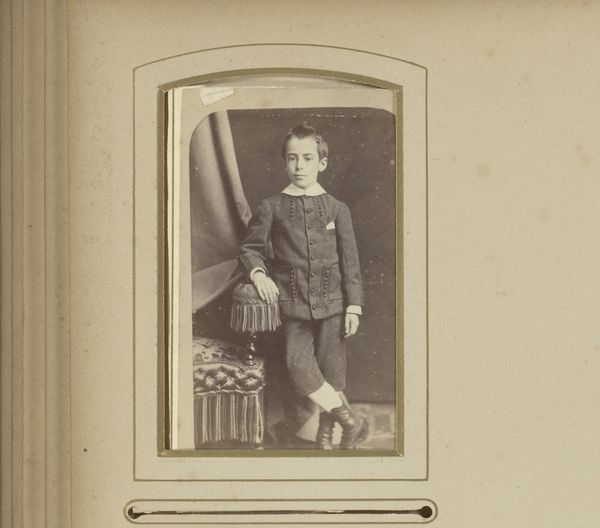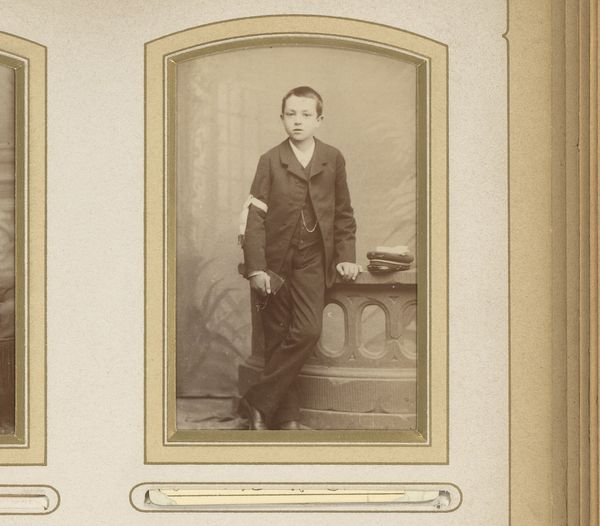
Portret van een jongen met hoed in de hand, staand bij een stoel 1861 - 1900
0:00
0:00
photography
#
portrait
#
photography
#
genre-painting
#
academic-art
Dimensions: height 83 mm, width 52 mm
Copyright: Rijks Museum: Open Domain
Curator: Let’s turn our attention now to this photographic portrait, made sometime between 1861 and 1900. It's called 'Portrait of a Boy with Hat in Hand, Standing by a Chair,' and it's attributed to Carel Eduard Westerborg. Editor: The sepia tone and stillness create an undeniably melancholic atmosphere. There's a formal constraint, almost a repression, in the pose and the limited palette. Curator: What strikes me is the material culture on display. This is more than just a snapshot; it's a carefully constructed image reflecting bourgeois values and aspirations. Consider the clothing—the tailored suit, the hat, even the pocket watch chain. Editor: Yes, those are crucial formal elements indicating class. And see how the light gently models his face. It is, however, a generic image, and this lack of distinctive personal features further enhances the sentimentality of the moment captured. Curator: It’s intriguing how the conventions of painting have been adapted to the photographic medium. Think about the composition. The positioning of the chair, the fall of the drapery in the background…these elements consciously echo portraiture from other visual traditions. It's meant to create the kind of image for distribution or kept safe inside the pages of family albums. Editor: True, the composition adheres to academic conventions of the era, but for me, the slightly blurred edges and limited tonal range underscore the limitations inherent in early photographic technology. The very materiality of the photograph seems to contribute to its emotional effect. Curator: The act of photographing itself had labor implications, creating professions linked to photography. But the portrait suggests much more – it embodies a period deeply engaged with constructing and displaying one’s identity in a rapidly industrializing world. Editor: In closing, examining the photograph on a formal level makes it more intriguing beyond it historical or social values. It truly becomes its own image. Curator: Ultimately, the photograph reminds us of a time where portraiture, both painted and photographic, served as critical instruments for navigating social status, family connections, and cultural identity.
Comments
No comments
Be the first to comment and join the conversation on the ultimate creative platform.
